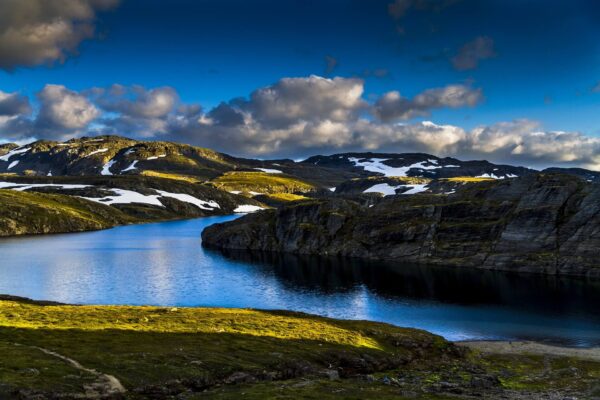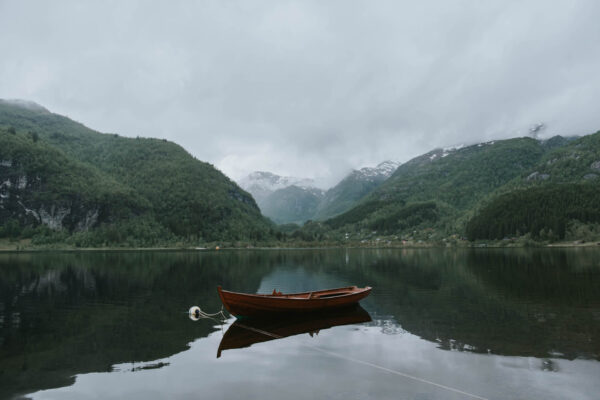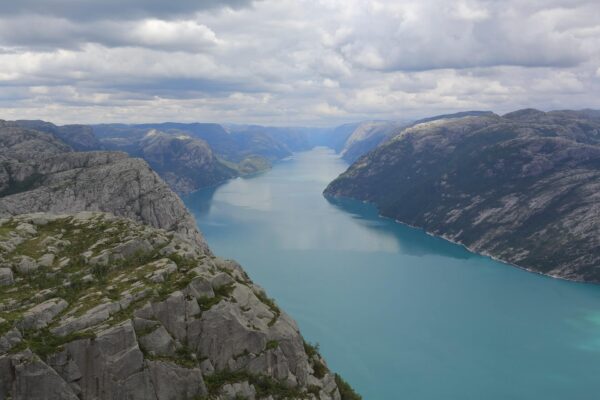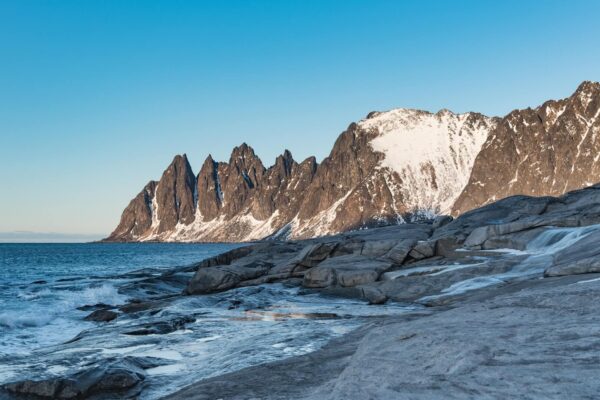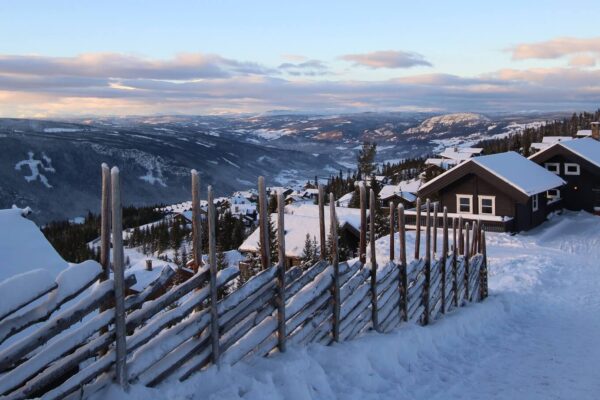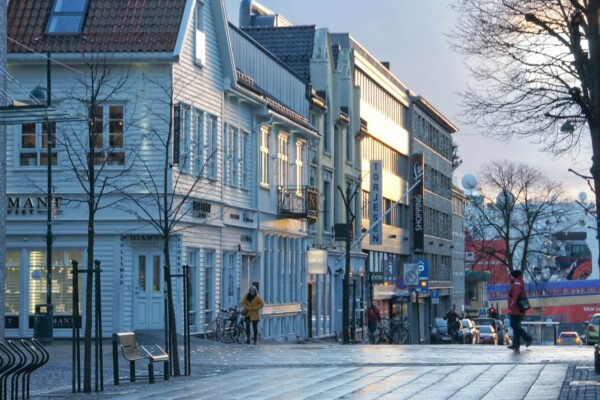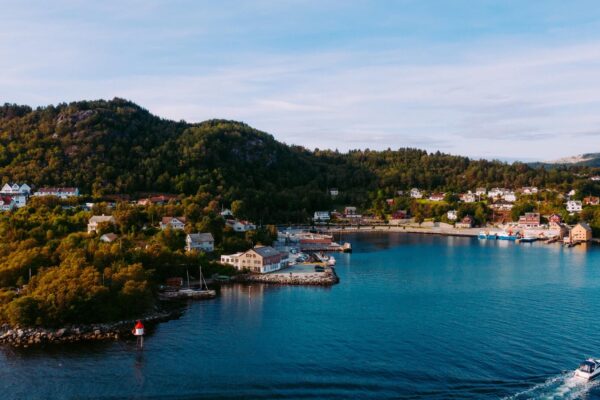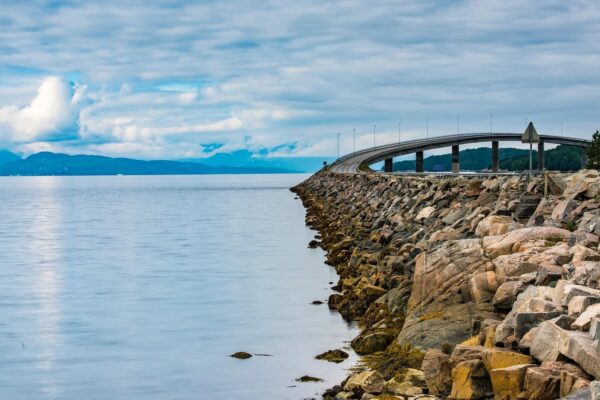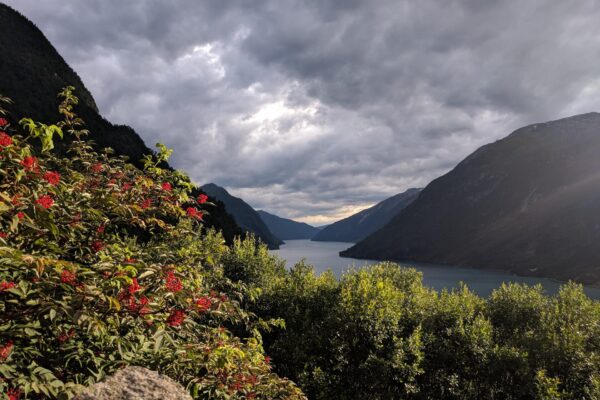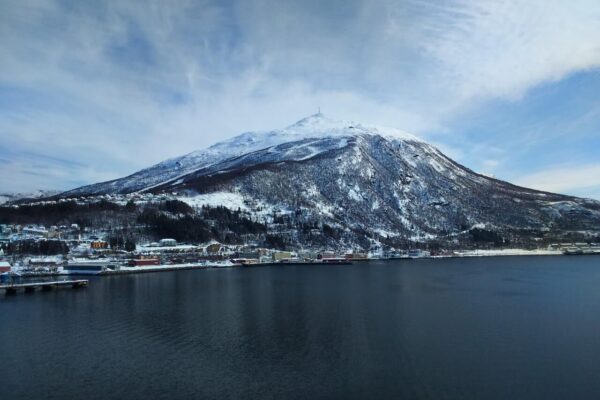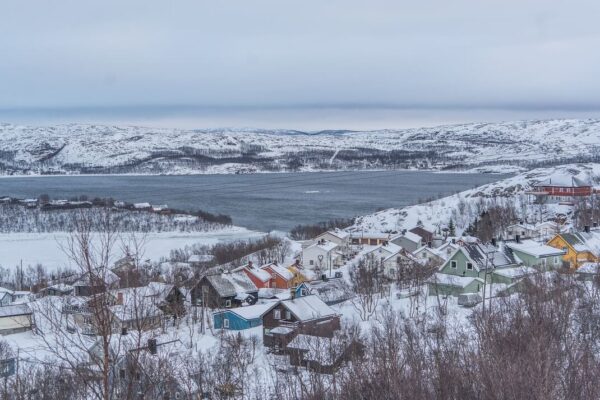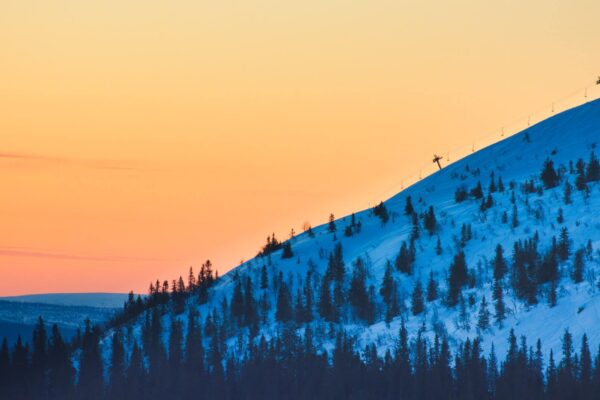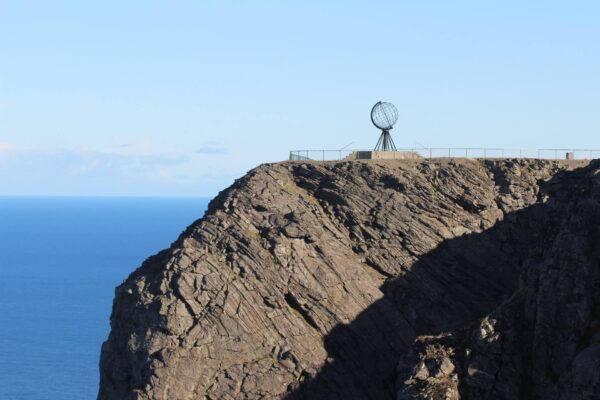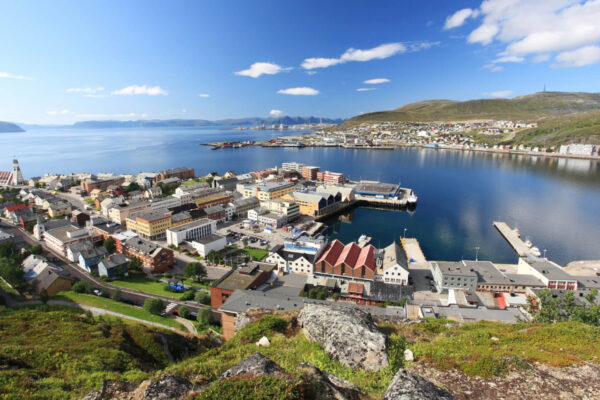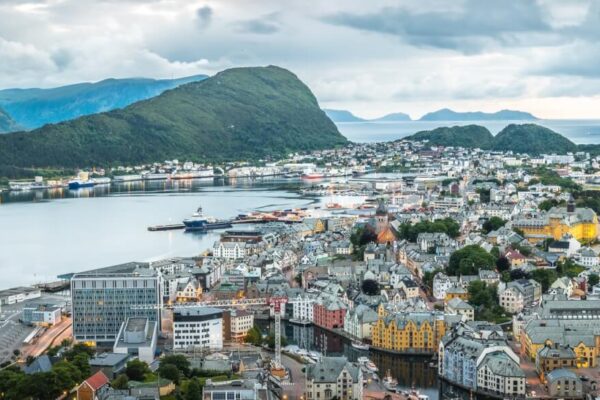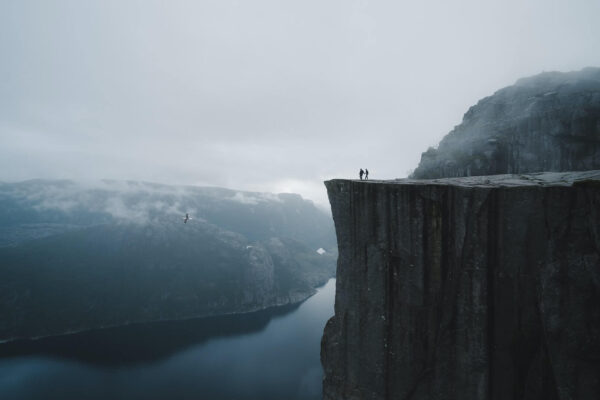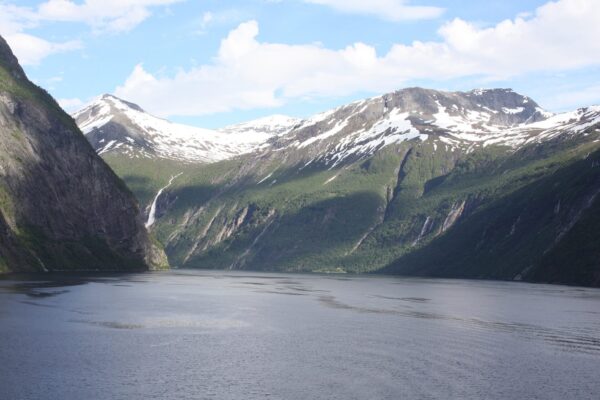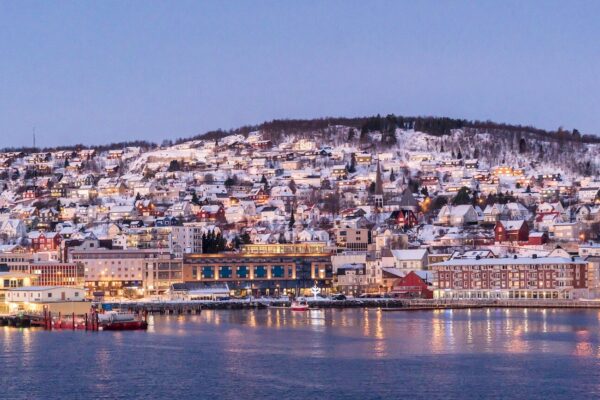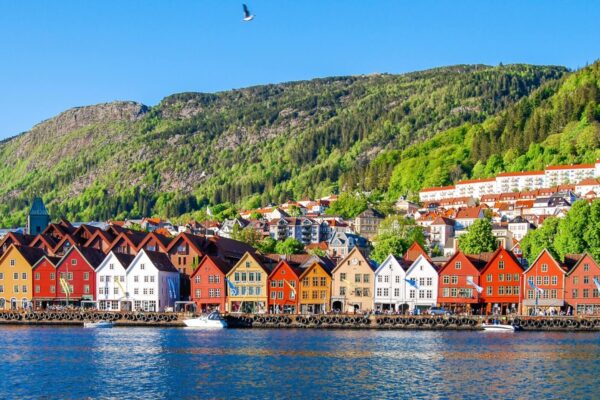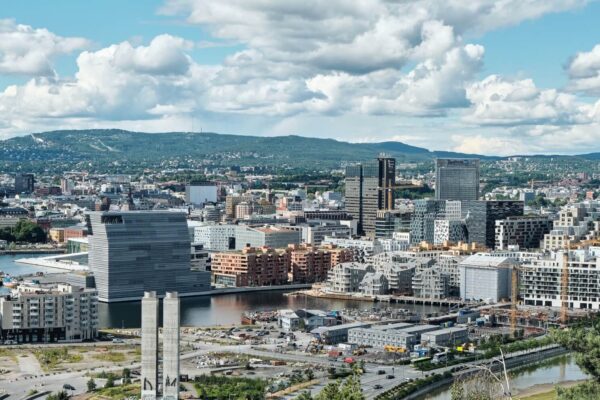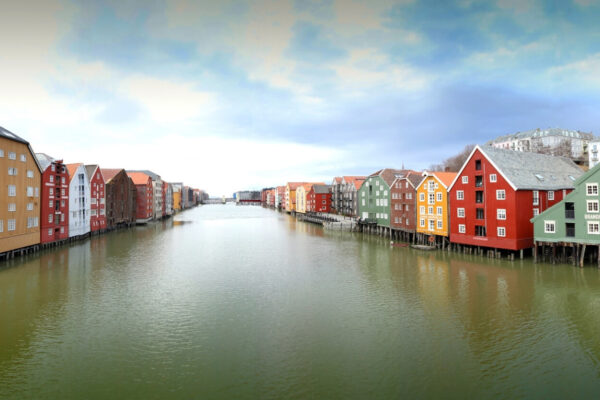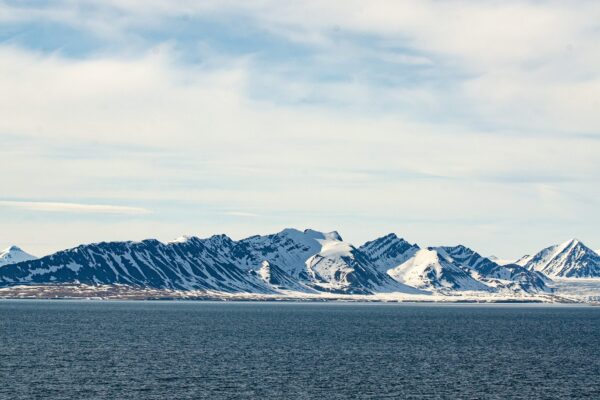Have you seen the impressive photos of the Norwegian archipelago and would now like to experience Lofoten for yourself? Here you can find out everything you need to know for your holiday in the Lofoten Islands: from the best sights to the best time to visit, as well as the best holiday homes.
Why go on holiday to the Lofoten Islands?
Many people first come across the Lofoten Islands, whose name translates roughly as “The Lynx’s Foot”, through impressive photos. The Henningsvaer football pitch is particularly well known. The bird’s eye view of the field has appeared online and in many magazines. The iconic little houses scattered across the foothills of the archipelago against a mountain backdrop are a popular destination for nature lovers.
The archipelago of around 80 islands extends 150 kilometres into the Arctic Ocean and is located to the west of Norway in the north of the Arctic Circle. You can marvel at the polar day and night there. As the islands are located on the Gulf Stream, the weather is rather mild for the geographical location.
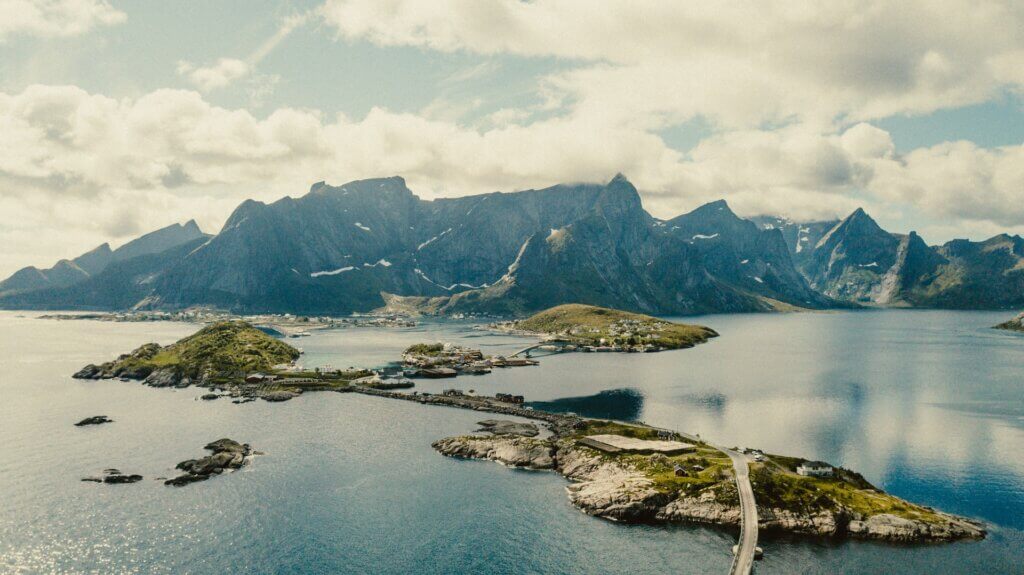
What is special about the Lofoten Islands?
The special thing about the Lofoten Islands for most people is the natural beauty of the archipelago. You can even see the Northern Lights from September to April. This is because the archipelago lies far north of the Arctic Circle, making it a great destination in winter to experience the Scandinavian polar night. In summer, on the other hand, you can enjoy the midnight sun.
The Lofoten Islands are also known for their close to nature sporting activities. Hiking, fishing, winter sports and even surfing and other water sports are particularly popular there.
Another advantage is that the tourism industry co-operates closely with the city administration to ensure that negative impacts of tourism are avoided. This means that the Lofoten Islands are certified as a sustainable destination.
How long should you travel to Lofoten?
It is advisable to plan at least one week for the Lofoten Islands. If you want a peaceful nature holiday and don’t want to visit new sights every day and are looking for peace and quiet, it can be longer. Even if you are planning a short road trip and want to leave yourself enough time to see everything, you should plan one to two weeks.
What is the best time to visit the Lofoten Islands?
The best time to visit Lofoten depends on what you would like to see. Depending on the weather, you can see the Northern Lights from September to mid-April. In summer, the weather is more suitable for camping, surfing or sea rafting.
Another highlight in summer is the midnight sun. If you want to experience when the sun doesn’t disappear below the horizon, then you should visit in the first half of July.
The period from June to August is recommended, as most activities are possible and on offer at this time. In winter, many shops and providers, especially in the tourist sector, are temporarily closed.
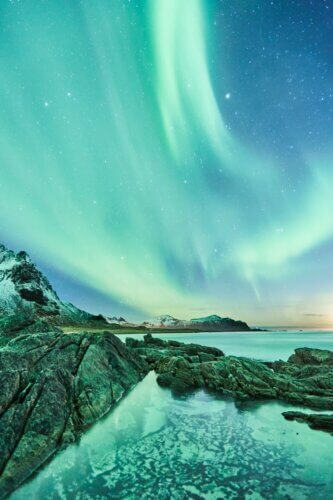
The weather on the Lofoten Islands
The weather on the Lofoten Islands is rather mild, considering the geographical location. This is due to the nearby Gulf Stream, which increases the temperatures. There is however a lot of rain, especially in October. Overall, when travelling to the Lofoten Islands, you should bear in mind that the weather can change constantly due to the location in the Arctic Ocean.
Lofoten: staying in a holiday home
Many people choose to stay in a holiday home when travelling to the Lofoten Islands. Those are particularly well suited for a holiday close to nature and travellers who enjoy their independence. In addition, there are only a few hotels in Lofoten and a holiday home is a great alternative, especially in winter. As food is particularly expensive in Norway and especially on the Lofoten Islands, accommodation with cooking facilities is recommended.
Lofoten: find the right campsite
If you want something even more close to nature, you can opt for a campsite, which is a great alternative to a holiday home, especially in summer. With a rented caravan, for example, you can discover Lofoten from tip to tip. Further, wild camping is not a problem, as long as you stick to the rules. You can find more information about this in the article on camping in Norway.
Places of interest in Lofoten
The Lofoten Islands are particularly famous for their natural sights. However, there are also cultural sights, such as the largest preserved Viking longhouse at 83 metres. You can marvel at the house in the Viking Museum in Lofotr.
Small coastal and fishing villages are an attraction of their own. One of these is Reine on the western tip of Lofoten, which is well known. The small red houses against the Lofoten mountain panorama are depicted in many famous photos of the archipelago.
If you are looking for unique beaches, you should visit the coast at Vareid and Unstad Beach. The coast at Lødingen and Flakstad Beach are also popular photo motifs. All in all, there are beautiful landmarks around every bend. That’s why a road trip is a great idea.
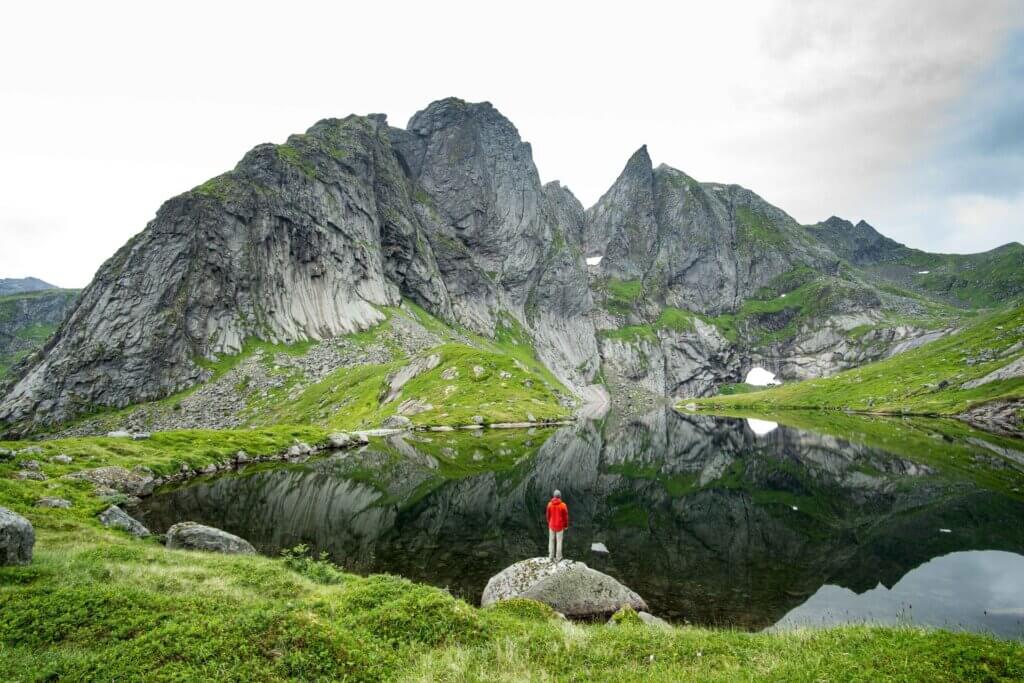
What is the quickest way to get to the Lofoten Islands?
There are three ways to get to the Lofoten Islands: By boat, by plane or by car. Of course, you can also combine these options. The combination of flight and a rental car is particularly popular.
Travelling by plane
The reason why this is not so popular is that the airports located directly on the Lofoten Islands are not served by direct flights from the UK. There are usually flights from Oslo every few days, or you can fly to Bergen or Leknes and travel on from there. However, flying is often more expensive than other options.
Travelling to Lofoten by ferry or car
Alternatively, you can travel by ferry from Bodø, Skutvig or Bognes. To reach these places, most people hire a car at a mainland airport.
You can reach the Lofoten Islands by car thanks to the numerous bridge connections on the E10 via Narvik, which is often favoured because Norway can be explored most flexibly by car. Public transport only operates on the most important routes.
